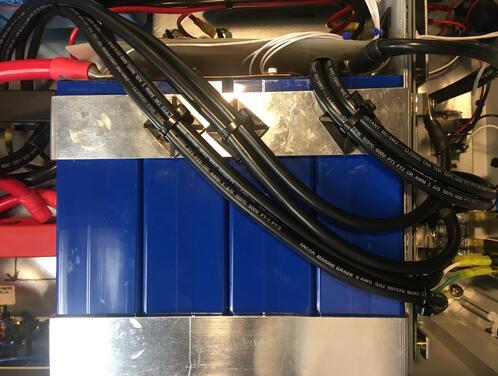Prismatic Cell
Introduced in the early 1990s, the modern prismatic cell satisfies the demand for thinner sizes.A prismatic lithium battery can be encased in either steel or aluminum, which mainly increases the stability of battery cells.In turn, this unique design tends to make prismatic cells thin and light, and also with the feature of space saving.

The rectangular shape of thin prismatic cells offer better layering than cylindrical cells, giving more flexibility for battery design engineers. the cells deliver capacities of 20–50Ah and are primarily used for electric powertrains in hybrid and electric vehicles.

Cross-section of a prismatic cell.
Prismatic cells are encased in aluminum or steel for stability. Jelly-rolled or stacked, the cell is space-efficient but can be costlier to manufacture than the cylindrical cell.A compact 12V battery pack could be easily created by connecting four prismatic cells together. Therefore, prismatic cells are commonly used in large power applications such as electric powertrain and energy storage systems.
Summary
The effective use of space makes prismatic cells attractive, however, prismatic cells have their own drawbacks. The poor performance of one prismatic cell will affect the performance of the entire battery pack. The increase of capacity also leads to the probability of battery inconsistency and short circuit, which eventually makes prismatic cells expensive to get a proper design and manufacture. Additionally, they are less effective in thermal management and relatively sensitive to deformation in high-pressure situations. A limited number of standardized cell sizes and a higher average KWh price contribute to the increasing cost of prismatic cells.
Battery, as the power source for electric devices, plays a vital role in ensuring the performance of devices. As the battery cells are a part of the battery pack, which is a part of the device, it means that all these parts must work in harmony. Therefore, when choosing a battery cell, understanding the needs of device, the operating environment, the chargers and other accessories are required so as to choose the right cells. Besides, before a battery cell is selected, space, cost and safety are also needed to take into consideration.